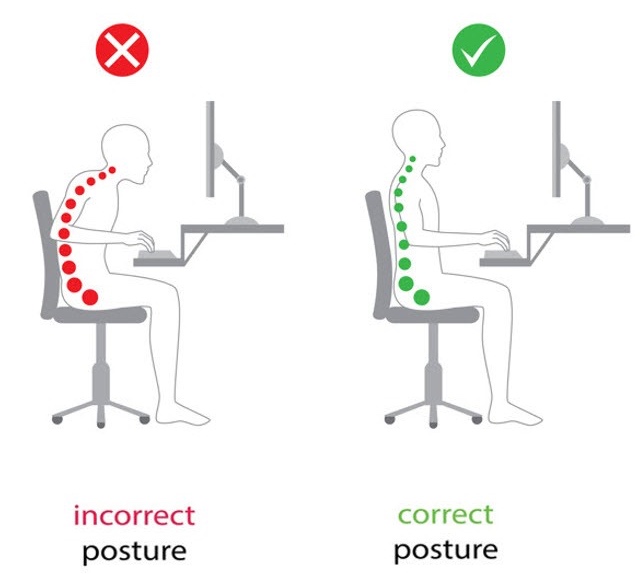By Dr. Clifford Yun, PT, DPT
What is good posture?
At first thought when we think of posture we think of sitting up straight. We can hear one of our parents or a teacher telling us to sit up in our chair. But posture is more than just sitting upright. Posture is about finding a center of gravity, maintaining it and then remembering to come back to posture when we forget about it.
There are different types of posture. Static and Dynamic. Static posture is the staying still posture and Dynamic posture is our body’s position with activity.
Posture is all about positing the landmarks of the body in the right order and position from the ground up. This is important to prevent back and joint pain from when we’re sitting, standing or walking all day. Regardless of if your day is spent sitting or moving around posture starts with where you’re attached to the ground.
Static Sitting Posture:
Feet: Start with your feet flat on the floor at about hip width apart. The arch of your feet should be right under your knee.
Hips: You hips should be slightly higher than your knees with equal weight on each side of the pelvis.
Spine: Your spine should stack on top of your pelvis in the following order. Pubic Bone (front of pelvis) + Navel (belly button) + Sternum (chest bone)+ Chin.
Shoulders: Roll the shoulder blades back then down to prevent them from rounding forward
*Fig 1. Posture image form https://theacidrefluxsolution.com
Static Standing Posture:
Feet: Again the feet are flat and hip width apart but the knees should be slightly bent, relaxed and not locked straight or falling outward or inward. The knee should be in-line with the middle of the foot.
Hips/Pelvis: Pelvis should be level. If the pelvis is down on one side then chances are the hips are not active or strong enough to keep them stable.
Spine: Again the spine should stack on top of each other in the mid-line: Pubic Bone (front of pelvis) + Navel (belly button) + Sternum (chest bone)+ Chin.
Shoulders: Rolled back and down
*Fig 2. Standing Posture Image from https://www.olympiabenefits.com


